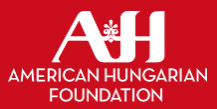The Eighth Tribe, 1976 (3. évfolyam, 1-12. szám)
1976-01-01 / 1. szám
Page 4 THE EIGHTH TRIBE January, 1976 tribes reached the Elbe River on the north, and the ridges of the Balkans in the south. In the twilights of the 9th century a new Ugrian people of Turkic organization arrived from the East in the Carpathian Basin: the Magyars. Recent research has thrown lights upon the herdsman culture of the hard-riding, nomadic Turkic peoples. Heretofore they were regarded as a pillaging, devastating horde. Now we know that they had a well-developed social, political and military organization, enabling them to build great empires, and to employ strategic methods unknown in the contemporary western world. This warring form of life throve on the vast steppes stretching from the Carpathians to the Manchurian plateau: and whenever these peoples in their westward wanderings met with other forms of life, the inevitable results were desperate struggles. Evidence indicates that the Turkic peoples were stockmen. According to Chinese historians they were always on the move “in search of grass and water.” In their social life, the family, taken in its broader sense, was the judicial and economic unit, with communal livestock and pasture. The ablest among the heads of clans led the whole tribe as its chieftain, at. least in matters of vital interests. The strong tribes undertook to organize the weaker ones, in this way forging an “empire” of their own. Since their mode of life was very similar, any tribe could join the “empire”, yet retain its own customs, language, and separate entity; but it would adopt the name of the leading tribe. Thus the whole “empire” bore the name of the organizing tribe. For instance, everyone in Attila’s empire was called a Hun, though it consisted of different peoples. The example of the Huns demonstrates that with the downfall of the leading people the “empire” crumbles, its place being taken by a whole series of races. Under the circumstances there was no other possible basis for political and social creations than this nomadic military organization. From this vast, nomadic world came the Magyars. As regards their origin, life, and customs during the centuries preceding their entry into the Carpathian Basin, information may be found in contemporary Byzantine and Arabic reports and in mediaeval chronicles, the best source being the Magyar language itself. A branch of the Finno-Ugric family of languages, it differs altogether from the Indo-European family (Greek, Latin, Germanic, Slavic, Celtic, etc.). It is most nearly related to the Finnish, though the Magyar vocabulary was supplemented by numerous Turkic words well before the 9th century A.D. Popular belief places the Magyars among the Asiatic migrants. This is not altogether correct. The eastern-most fragments of the Finno-Ugric races mingled with the westernmost tribes of the Turko- Bulgar peoples. The Magyars may be traced to the intermingling of these two distinct races, and thus the Magyar language was enriched with Turkic elements while retaining its basically Finno-Ugric characteristics. The latter predominates in terms applying to family life, fishing, hunting, trading and the like; Turkic roots are found in words relating to animal husbandry, and to political and military organization. The origin of the early Magyar people may be reconstructed as follows: URAL Stock Finno-Ugrians ALTAIC Stock I Finno-Perm Branch Män’si Branch Western Turks I .. I . I FINNS Man’si-eri1 (pre-Magyars) Ogurs MAGYARS Turkic peoples Mongols Eastern Turks Huns, Avars, etc. The merging of races that resulted in the Magyar people took place between the 1st and 5th centuries A.D. An Arabic writer notes that the Magyars had begun their southward migration from the Ural mountains before the end of the 5th century. During the following centuries they lived in the Caucasian region east of the Sea of Azov, again under the influence of Turkic neighbors. It is difficult to determine their exact whereabouts during this period; being a nomadic people, they were constantly moving, often a part of empires founded by other Turkic peoples under whose name they were known. Thus the Magyars were variously called Sabyrs, Turks, Onogurs, the latter supplying the stem for Hungarus, Hungarian, Hongrois, Ungar. During their association with these nomadic empires the Magyars patterned themselves almost exclusively after the Turkic model, becoming a welldisciplined, conquering race. The last empire of which the Magyars formed a part was the Kazar, with which they were connected until the middle of the 9th century. During the Kazar period the Magyar chieftain, bearing the title “Kiindii” was the leader of the entire people. After the break with the Kazar Empire, another chieftain of the rank of “gyula” gradually rose in authority. This gyula was the forefather of the Árpád dynasty. — To be continued —
